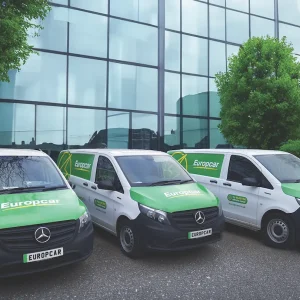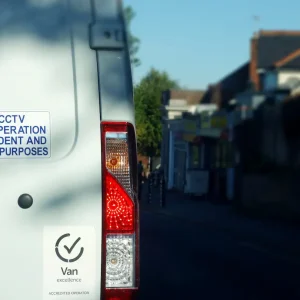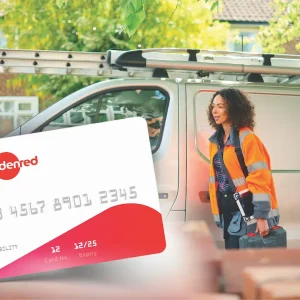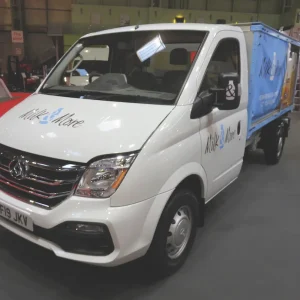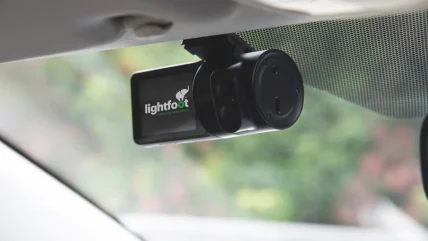
The world of telemetry has come a long way since it merely provided fleet managers with track and trace functionalities. It is now inconceivable to imagine a fleet of LCVs operating without some form of connectivity, whether this is provided by an OEM, a third-party supplier or a combination of both.
Ford’s new Transit and Transit Custom ranges, for example, are fully integrated with the Ford Pro platform of software and services, including standard 5G connectivity that enables over-the-air updates, vehicle health checks and service bookings. Ford claims to have broken new ground with its Upfit Integration System that will enable converters to connect up to a van’s electrical system, in-cab touchscreens and aftermarket equipment, removing the need to modify the cab area and enabling usage to be monitored remotely.
In partnership with telematics firm LEVL, Maxus has developed its Intelligence Onboard fleet management system to smooth the transition to electric LCVs. Fleet operators gain access to real-time information, including the state of charge, energy consumption, energy costs, live GPS tracking and charging data. Maxus now uses data gathered from Intelligence Onboard to monitor battery degradation in customers’ EV fleets. It says a tracking algorithm can predict potential issues, allowing customers to address them before they result in downtime.
By assessing changes in the battery’s performance and efficiency, Maxus claims the system can predict the battery’s lifespan, enabling fleets to plan maintenance or replacements. Maxus Intelligence Onboard also examines the effects of different charging modalities – AC and DC – on the health of the battery, providing insights into the optimal charging methods for individual usage patterns, which it says will improve the EV user experience while extending battery longevity.
Bridgestone Mobility Solutions’ fleet management platform, Webfleet, is adopting methods to help businesses transition to electric vans in a cost-effective manner. A recent addition to its portfolio is an EV route optimisation solution, designed to maximise van fleet productivity and minimise downtime. Businesses can plan routes for drivers that take account of battery levels, capacity, average energy consumption and charge point locations. A timeline of suggested routes includes predicted journey durations, charging times and the locations of where the driver can charge highlighted on a map. Route navigation information can be sent directly to the drivers’ in-vehicle terminals.
Battery capacity information for fleet vehicles is included in Webfleet to help businesses choose the appropriate van for each journey. Being able to view charge levels at the start and end of each job means fleet managers can assess battery capacity alongside energy usage and identify when charging sessions occurred.
Webfleet OptiDrive analyses aspects of driver behaviour to improve performance and reduce energy consumption. The data breaks down energy used for driving and other purposes, such as the powering of auxiliary equipment or for air conditioning. It also details energy recovered through regenerative braking and coasting.
Bridgestone says the Webfleet Charger Connection Insight Report ensures that where possible charging takes place when tariffs are lowest and is designed to ensure charge levels are maintained between the optimal 20% and 80% to minimise battery degradation.
The firm says the most vital function of its EV management toolkit is to enable fleets to identify the ICE vans that could practically and cost effectively be replaced by electric alternatives.
This is also the prime purpose of Geotab’s EV Suitability Assessment (EVSA) tool, which aims to match existing fleet telematics data to real-world electric vehicle performance data to enable businesses to transition to electric vans with the least possible disruption to their operations. Geotab says EVSA’s functions include determining which EVs could replace an ICE van in terms of range capability, providing a whole life cost comparison covering procurement, maintenance, fuel and electricity costs and a direct one-to-one cost comparison for each van against a potential electric replacement. Geotab claims more than six out of 10 fleets running EVSA in 2022 cut their overall emissions.
Lightfoot uses an in-cab driving coaching device to enhance safety and lower emissions through improving driver behaviour. Its new Lightfoot Vision is designed to build on its existing service, offering real-time feedback to drivers linked to rewards. Lightfoot Vision uses AI and machine vision to alert drivers when they are behaving carelessly, such as by not wearing a seat belt, using a mobile phone, eating, drinking or smoking. Available cameras range from basic road-facing units to more advanced driver-facing dash cams. It can also capture instances of harsh driving and cornering, speeding, idling and events where drivers receive a Lightfoot penalty. The footage is available to view through the Lightfoot portal. The system uses AI to review the raw footage and highlight driving events in need of further investigation by fleet managers.
Lightfoot managing director Paul Hollick says: “The introduction of Lightfoot Vision’s in-cab camera suite takes our ability to positively influence driver behaviour for the
better to an entirely new level. It enables fleets to operate in a safe, efficient, and socially responsible way, where driver self-management, aided by nudge technology through our in-cab telematics devices, instantly and sustainably improves driving behaviour – removing the need for costly training and time-consuming data analysis at the same time as improving customer service.”
Hollick claims Lightfoot Vision could also provide fleet managers with “indisputable evidence” to counter insurance fraud.
He explains: “By understanding where fleet risk exists and giving drivers the tools to reduce that, we can minimise the impact of poor, distracted or inefficient driving, saving time, money and lives. In addition, fleets using the Lightfoot system should also see a further improvement in MPG – or an extension of range in EVs – so we’re ensuring all bases are covered for optimum performance.”
Reflex Vehicle Hire’s Drive with Reflex service uses AI to turn the spotlight on drivers in the van rental sector. The firm says its new Flexicampro telematics and dash cam system recognises on-road risks and identifies driver behaviour that is likely to increase the chances of an accident occurring, such as eating, smoking or mobile phone use while also detecting an unfastened seat belt or signs of driver fatigue.
Reflex uses the findings from its data to support driver awareness programmes and claims this has enabled it to eradicate the non-use of seatbelts.
The platform also receives data from the engine management system to enable proactive maintenance and servicing that can reduce the risk of breakdown and cut vehicle downtime as well as offering vehicle walk-round checks and defect reporting.
The evolution of telemetry has seen ever more sophisticated technology enter the market place but the core goals of increasing safety, efficiency and reducing emissions remain the same.

